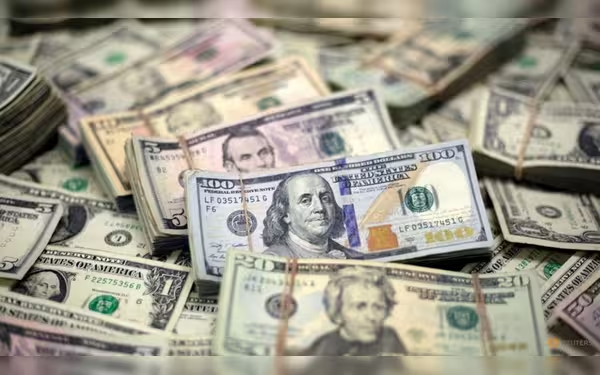Saturday, November 16, 2024 05:55 PM
US Dollar Declines to 8-Month Low Against Yen Amid Rate Cut Speculation
- US dollar hits lowest point in 8.5 months against yen.
- Market anticipates potential 50-basis-point rate cut by Fed.
- Euro gains slightly as dollar index decreases.
 Image Credits: channelnewsasia
Image Credits: channelnewsasiaThe US dollar reaches an 8.5-month low against the yen as speculation grows over a potential 50-basis-point interest rate cut by the Federal Reserve.
The U.S. dollar has recently experienced a significant decline, reaching its lowest point in nearly nine months against the Japanese yen. This drop comes as speculation grows regarding a potential interest rate cut by the Federal Reserve, which is set to hold its policy meeting next week. Analysts have pointed to reports from major financial publications that suggest a 50-basis-point cut is still a possibility, stirring up market expectations.
On Friday, the dollar fell by 0.66 percent to 140.855 yen, after hitting a low of 140.285, a level not seen since December 28. This decline is part of a broader trend, with the dollar down 1 percent over the week. The euro also saw a slight increase against the dollar, rising 0.08 percent to $1.1083. The European Central Bank recently cut interest rates by 25 basis points, but its president, Christine Lagarde, has tempered expectations for further cuts in the near future.
Market analysts have noted that the recent media reports have shifted the focus back to the possibility of a larger rate cut by the Fed. The U.S. rate futures market now indicates a 51 percent chance of a 50-basis-point cut at the conclusion of the Fed's two-day meeting on Wednesday, a significant increase from just 15 percent earlier in the week. This shift in sentiment has led to an unwinding of positions that were previously betting on a smaller 25-basis-point cut.
In addition to the dollar's decline, the euro's gains have contributed to a decrease in the dollar index, which fell by 0.08 percent to 101.08. John Velis, a strategist at BNY Mellon, explained that the increased likelihood of a more dovish Fed policy has driven the dollar lower while boosting other currencies.
Despite the dollar's struggles, it managed to trim some losses after data indicated an improvement in U.S. consumer sentiment for September. The University of Michigan's preliminary reading showed an increase to 69.0, surpassing economists' expectations. This data, however, also supports the case for a typical 25-basis-point cut next week, as inflation measures have shown unexpected rises.
Former New York Fed President Bill Dudley has added to the speculation surrounding a potential 50-basis-point cut, arguing that current rates are significantly above the neutral rate for the U.S. economy. He questioned why the Fed has not yet initiated such a move, suggesting that it may be time to act.
Meanwhile, the British pound has seen a slight decrease against the dollar, edging down 0.01 percent to $1.31235. The Bank of England is expected to maintain its key interest rate at 5 percent in its upcoming meeting. Additionally, investors are closely watching the Bank of Japan's interest rate decision, anticipated next Friday, where it is expected to keep its short-term policy rate steady at 0.25 percent.
The current fluctuations in the currency market highlight the intricate relationship between interest rates and currency values. As the Federal Reserve prepares for its upcoming meeting, the potential for a significant rate cut could reshape market dynamics. Investors and analysts alike will be keenly observing these developments, as they could have far-reaching implications for the global economy. Understanding these trends is crucial for anyone looking to navigate the complexities of the financial landscape.













